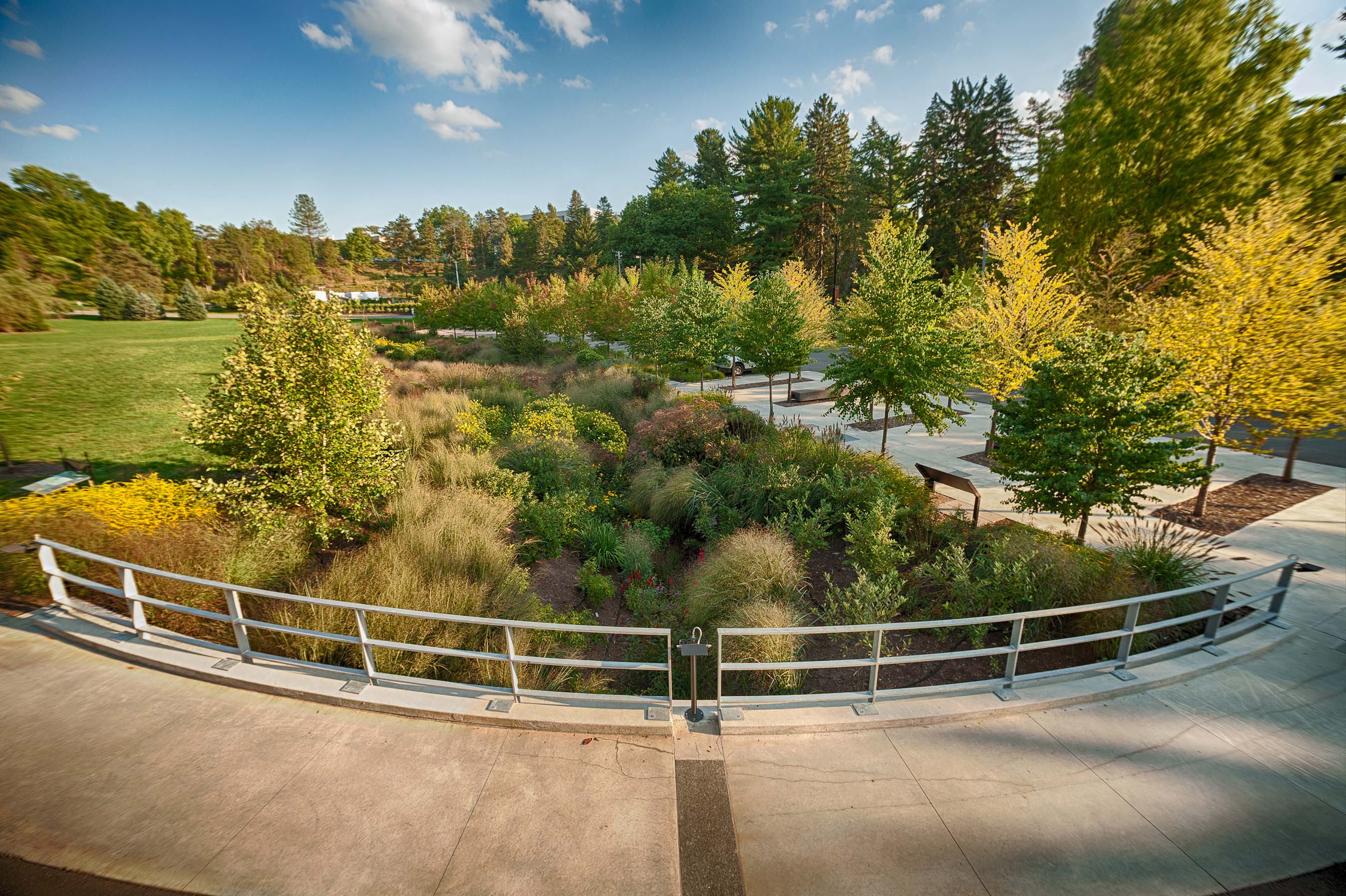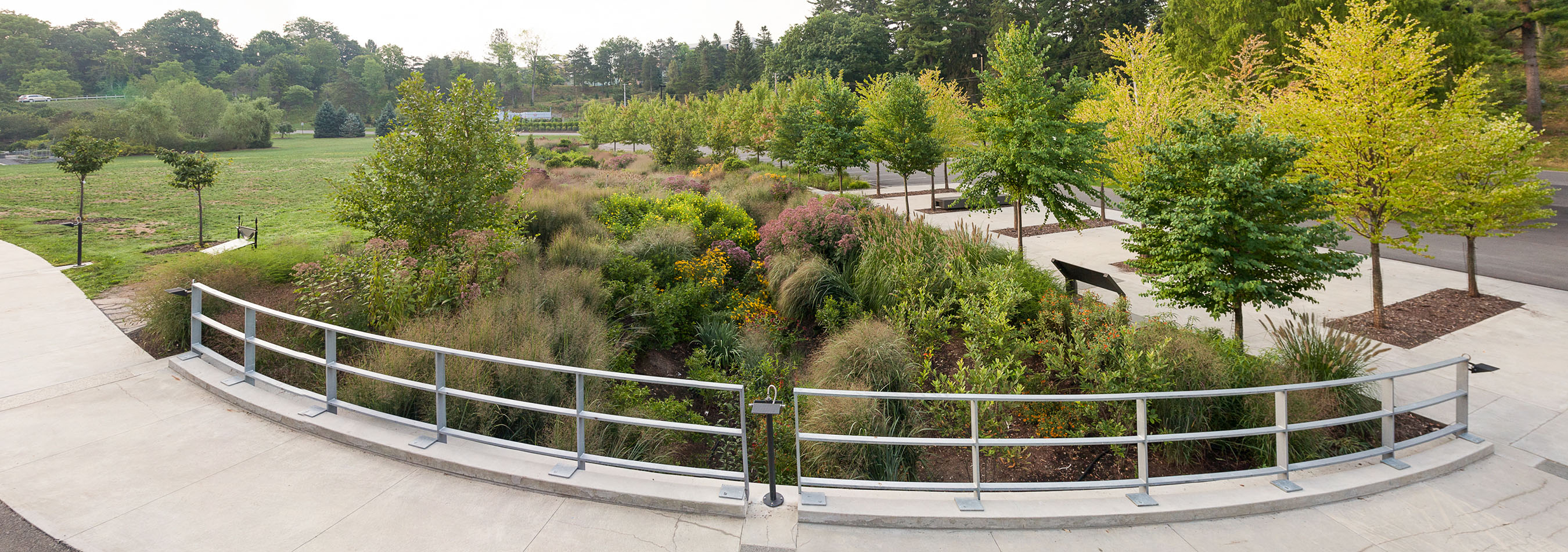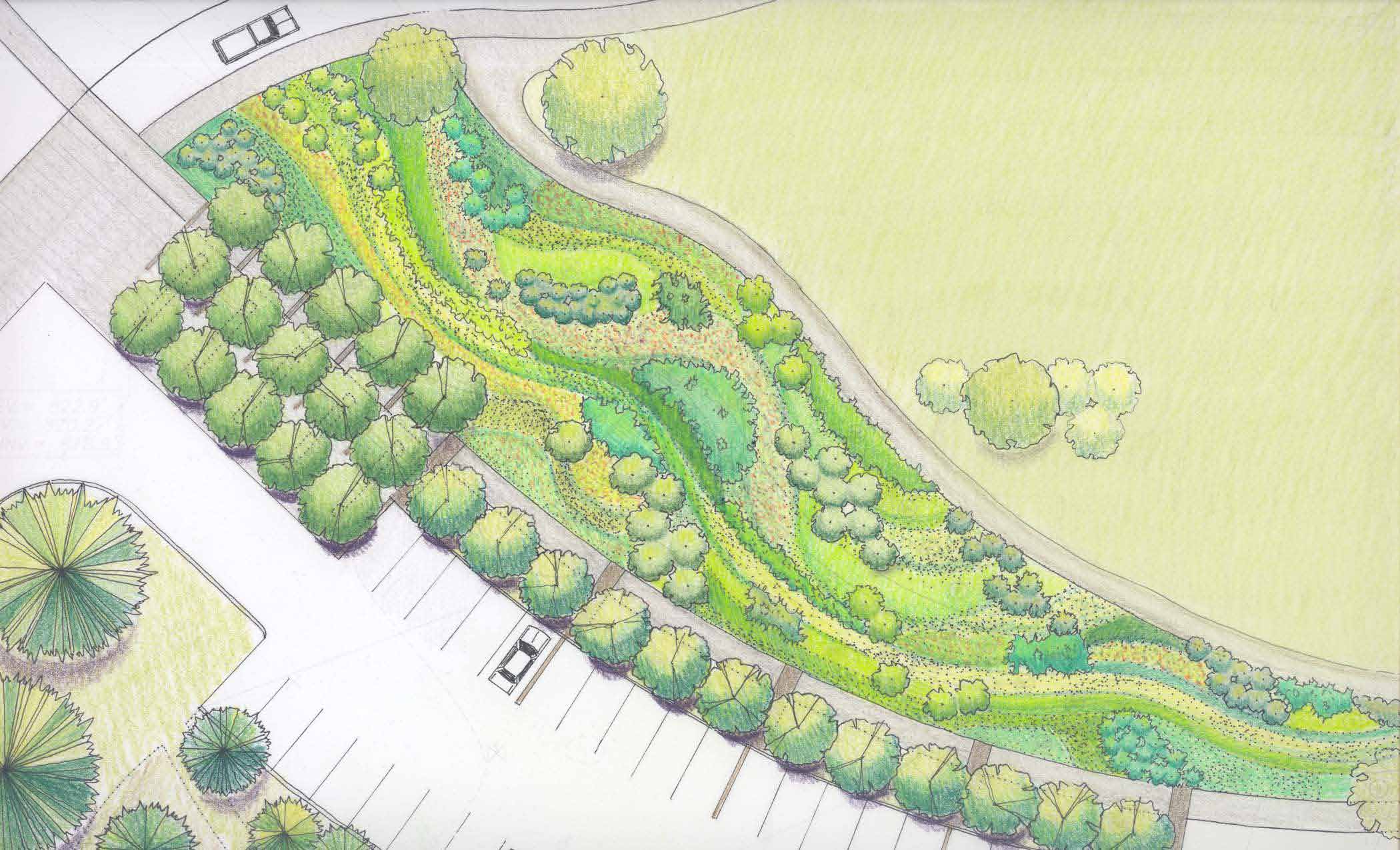![]()
Botanic Gardens Bioswale
Sustainable Landscapes Trail at Cornell University
In all urban environments, adverse soil and water quality resulting from previous human activity and by the development of roads, buildings and other structures restricts plant establishment and growth, thus reducing or eliminating the ecosystem benefits we expect to receive from them. One urban soil restoration and remediation technique is to implement a bioswale in an area. A bioswale is a trench that is backfilled with porous materials and vegetation to reduce runoff and increase groundwater recharge.
Why is this site sustainable?
Bioswales are designed to remove silt and pollution from surface water runoff, leaving the water cleaner than when it entered. They perform a variety of sustainable functions:
- They slow the rate at which stormwater runoff returns to nearby Beebe Lake, which protects Beebe Lake from large storm surges that can overwhelm its capacity and cause damaging levels of erosion.
- They enable stormwater runoff to recharge groundwater.
- They provide habitat for insects, including pollinators as well as birds, reptiles, amphibians and mammals.
- They are used as a teaching landscape for University classes and the public.
- They serve as a demonstration for encouraging the implementation of bioswales in the home landscape.
Bioswale and Filter Strip Construction and Function
- The pavement was graded to direct water runoff from the parking lot and the road into the planted filter strip, then into the bioswale.
- River stone slows down water before it enters the filter strip.
- Sediment begins to settle out of the runoff in the filter strip, with the help of plants and soil. The soil in the filter strip is a blend of sand, loam and compost (2:1:1 ratio) to help water further drain into the bioswale.
- From the filter strip, water is collected by drains under the sidewalk grates, then channeled into the bioswale.
- Runoff is channeled into the bioswale adjacent to the parking area. The swale shape is configured to compliment the existing intermittent stream, which feeds into Beebe Lake. The bioswale captures 90% of the surrounding stormwater runoff.
- Once in the bioswale, some water infiltrates the ground, replenishing groundwater supply. The bioswale soil is a mix of once-screened loam, Cornell compost and coarse sand (1:1:1 ratio) to boost the rate of infiltration.
- As water infiltrates through the bioswale, sediment and pollutants continue to be filtered out. Micro-organisms on plant roots and in the soil, help break down harmful pollutants including metal, bacteria, nitrogen and phosphorus. 80% of the average annual post-development Total Suspended Solids (TSS) is removed.
- Stormwater that does not infiltrate into the ground, but is now cleaner, is captured by a subsurface drain under the bridge and discharged into nearby Beebe Lake.
Printable version(pdf) of a detailed drawing of the erosion and sediment control plan for the bioswale, parking lot and surrounding area.
Plants in the bioswale are hardy, strong-rooted perennials and grasses able to tolerate both wet and dry conditions. Most of them are native to this region. Switchgrass (Pannicum virgatum) is a dominant plant in the bioswale. For variety, nine cultivars were planted with different flower texture and color. Additional plants include cultivars of sneezeweed (Helenium sp.), Joe Pye weed (Eupatorium dubium), and milkweed (Asclepias sp.). Shrubs and small trees such as red chokeberry (Aronia arbutifolia'Brilliantissima' GOLD MEDAL), and American hornbeam (Carpinus caroliniana) add height to the landscape. Cornell Botanic Gardens Landscape Designer Irene Lekstutis combined flowing drifts of ornamental grasses with groupings or “islands” of perennials with bold and architectural habits to create a planting design that evokes a braided stream.



